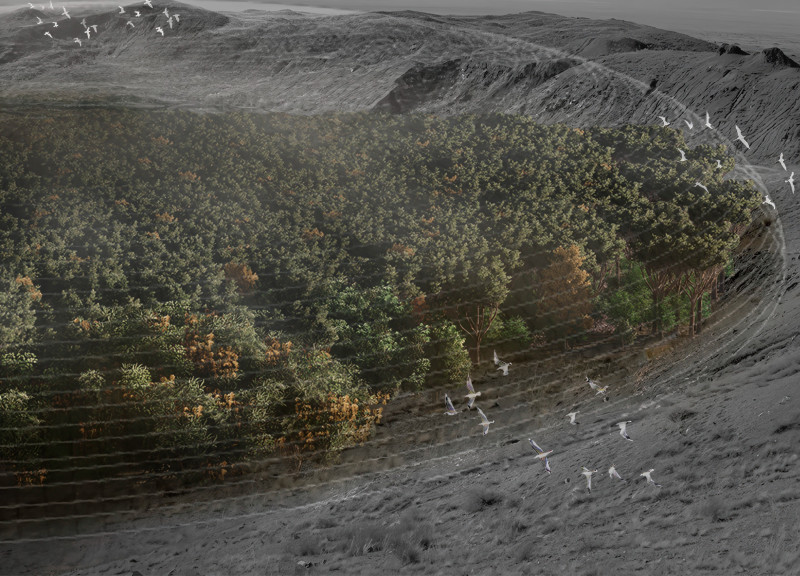5 key facts about this project
The architectural design primarily functions as a mixed-use development, integrating residential, commercial, and communal spaces. This multifunctional aspect reflects a modern understanding of urban living, where the blending of various activities into a single space encourages a sense of community. The layout is cleverly organized, allowing for seamless transitions between different areas while ensuring that privacy and openness are balanced. The spatial arrangements invite interaction, promoting engagement among users while accommodating personal retreat.
Materials play a crucial role in the overall character and functionality of the project. A careful selection of locally sourced brick, sustainable timber, and expansive glass panels articulates the design language, expressing both solidity and transparency. The use of brick not only provides durability but also connects the project to the historical context of the region, while timber adds warmth and a human scale to the interiors. The expansive glass facades enhance natural light penetration and create a visual connection between the interior spaces and the outside world, ensuring that the building's occupants feel linked to their environment.
Architectural details within the project reinforce its unique identity. Overhangs and cantilevered structures not only serve practical purposes, such as providing shelter from the elements, but also contribute to a dynamic silhouette against the skyline. The integration of green roofs and vertical gardens underscores a commitment to sustainability, offering ecological benefits while enhancing the aesthetic experience for residents and visitors alike. These design strategies reflect a conscious effort to address contemporary environmental challenges through architecture.
The unique design approaches evident in this project stem from a deeper understanding of place and user experience. Rather than imposing a singular architectural style, the design embraces the eclectic nature of its surroundings, allowing it to be both contemporary and contextually relevant. The idea of creating spaces that promote social interaction is paramount; communal areas are thoughtfully positioned to encourage gatherings, whether in internal courtyards or through accessible rooftops that provide stunning views of the cityscape.
Additionally, the project prioritizes inclusivity through its design decisions. Facilities are designed to be accessible to all, accommodating diverse user needs and preferences. This consideration reflects a growing trend in architecture toward creating environments that are welcoming and supportive of various lifestyles.
By examining the architectural plans, architectural sections, and architectural designs, one can appreciate the careful thought that has gone into every aspect of this project. Each design idea has been meticulously developed to create an environment that is functional, engaging, and sustainable. The interplay of materials, forms, and spaces culminates in a design that is not only visually appealing but also responsive to the needs of its users and the surrounding community.
This project is a testament to the evolving nature of architecture, where innovation meets tradition, and user-centric design takes precedence. For those interested in exploring the finer details of this project, including architectural plans and sections that depict the intricate relationships between different components of the building, further investigation into its presentation is encouraged. Through engagement with these elements, a deeper understanding of how architecture can effectively respond to contemporary challenges will emerge, enriching one’s appreciation for the design process involved in creating such a multifaceted project.























